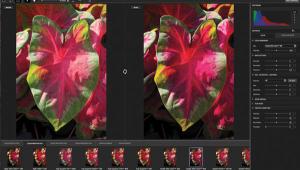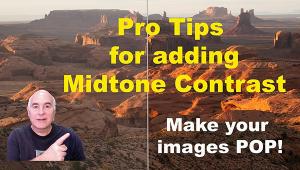I have never been good in taking photos and moments captured. But I am willing to learn one step at a time and thank you for helping me. - Carmack Moving and Storage
Shoot Film And Scan; One Photographer’s Approach To The Digital Dilemma
Stymied by all the buzz about megapixels, dpis, ppis, and what-have-you? Should you use a digital camera? Or shoot film? And which is really better? Well, yes, it's a veritable jungle of competing facts, pseudo-facts, and ideologies out there. Then there is the obsolescence factor. As someone who bought a Nikon F Photomic in 1968, a Linhof 4x5 in '70 and proceeded to use them for the next three decades with little concern they might become passé, the prospects of investing in the latest piece of digital techno-wizardry only to have it relegated to the status of a Model-T by the end of the year is a bit daunting.
 |
|
|
Although I have been deeply involved in black and white fine art photography
for more than 30 years, before that I had an abiding interest in color. Indeed,
I began shooting Kodachrome and Agfachrome slide films in the '60s and
was enthralled with their luscious colors. Ultimately photography is a print
medium, though, and when I began converting those transparencies into prints
in the mid-'70s, I was rarely happy with the results. Only dye transfer
prints did them justice, but those were either very expensive to print commercially
or extremely tedious to produce oneself. Eventually I put color on hold for
25 years--until now. For me, the answer to my color printing needs arrived
along with digital.
Besides my interest in color, I also have been intrigued with the pictures people
are taking with digital point-and-shoot cameras only slightly larger than a
deck of cards. For years I've lugged bulky cameras fastened to sturdy
wooden tripods all over the Southwest, bags of lenses and/or film holders slapping
against my side as I trod canyons and mesas in search of a moment of truth.
I achieved many striking results and attained wide recognition for my work,
but in recent years I have begun asking myself if this is really all that photography
is about.
 |
|
|
More and more it has not been fun, but drudgery. And if I am shooting 4x5,
then others are shooting 8x10, 11x14, 12x20, etc. Bigger is always better. What
I have wanted is a recipe for enjoying myself. Five years ago I bought a Contax
645 medium format camera, and suddenly things changed. It was my first automatic
camera: autofocus, exposure, film advance, etc. But more than that I rediscovered
the joy of just taking pictures. After years of shooting everything (even 35mm)
on tripods, I soon found myself getting great shots with the Contax--handheld!
Then, two years ago I bought myself a true point-and-shoot camera, an Olympus
Stylus Epic. This $80 camera (with case and battery no less) does not have a
zoom lens, just a 35mm f/2.8 fixed lens--but a critically sharp lens, it
turns out. It has automatic exposure, focus, and film advance, both averaging
and spot metering, something like five different flash settings, and does acceptable
close-ups down to 14". But what it really excels in are pictures in the
4 to 20-foot range. Pictures in this "middle distance," as I refer
to it, come out with an awesome clarity. All this from a camera that costs 1/100
the price of a Canon EOS-1Ds Mark II!
 |
|
|
So what does this have to do with digital? Well, the Olympus is not really
made for black and white. There is no exposure compensation and its clamshell
on/off design makes using filters awkward at best. Knowing color negative film
has a broad exposure latitude, which makes it perfect for point-and-shoot exposures,
I began shooting what turned out to be a gem of a film: Fuji Reala. While the
majority of photographers shooting color these days are using chromes such as
Fujichrome Velvia or Kodak VS100, you rarely hear much about Reala. Even people
at the photo labs where I have it processed ask me where I get it because they
rarely see it. Indeed, many people think it was discontinued years ago.
- Log in or register to post comments


















































